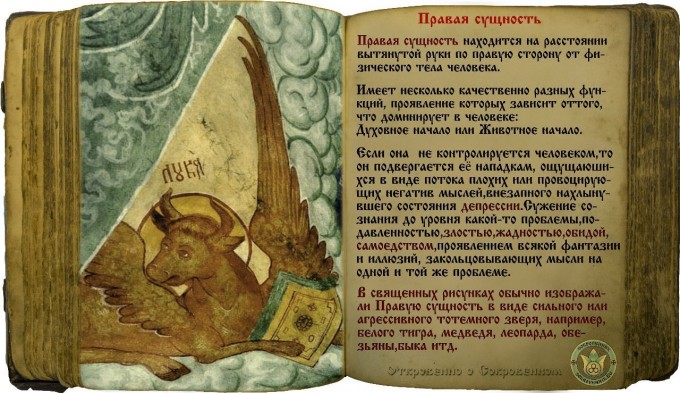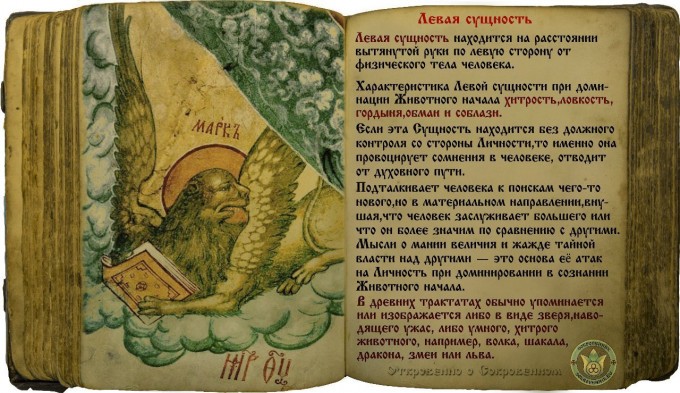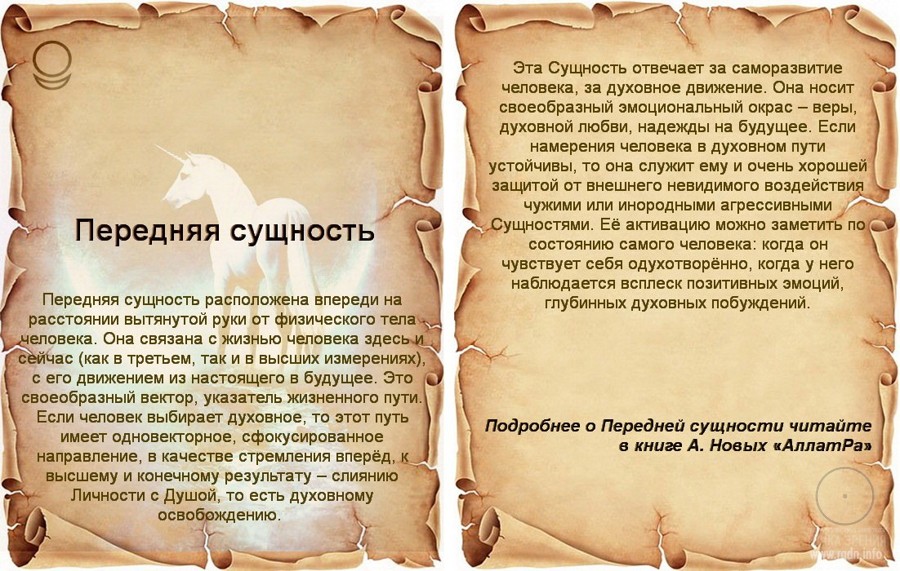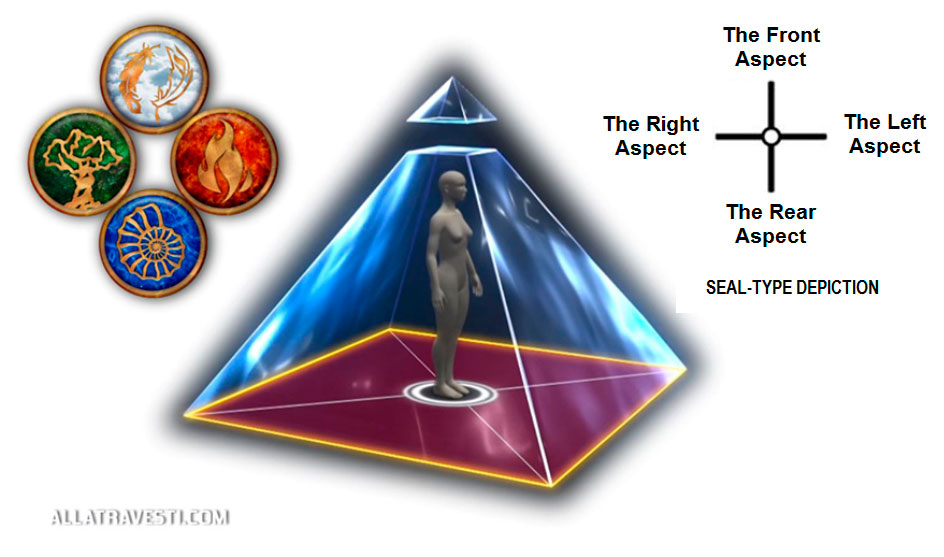Herein we continue to collect evidence of the existence of the four human Aspects in the invisible energy and information structure of a human being. It is time to consider the Aspects from a purely practical perspective, therefore let’s refer to relevant description of the Chetverik meditation as given in the AllaRa book. According to the following paragraph, this meditation represents the first step to a conscious acquaintance with the Aspects, and on my part I can only add anyone can get acquainted with his or her Aspects through this meditation and accumulation of personal experience.
CHETVERIK meditation: description in the AllatRa book
This meditation is the first step to getting consciously acquainted with one’s Aspects. While mastering it, a person learns not only to control his or her emotional states, but also to understand the real cause of such states emergence. As a rule, in their everyday life people neither notice nor keep track of why they suddenly get overwhelmed with various moods and emotions, which are changeable like weather.
From time to time people feel anger, aggression, slyness or fear, or have sudden memories of the past with a burden of negativity, and so on. At best, a person identifies such states in oneself as an evident manifestation of the animal nature that has already fully captured his or her consciousness. He or she begins to suffer from this vicious circle of thoughts and emotions, at the same time strengthening them with his or her attention. In other words, one does not trace the initial provocation from the lateral Aspects. Whereas this meditation helps to develop skills that make it possible not just to track this process, but also to stop it in time, that is, to terminate it before this state completely engulfs a person. Hence, this meditation is not only very effective, but, what is equally important, especially for beginners, it is easy to master, since it is similar to a psychotechnique.
Purpose of the meditation: to learn to understand the moments of activation of each of the four Aspects, feel them deeply, identify emotional outbursts accompanying such activation, and understand the nature of manifestation of different thoughts, which are caused by this process and subsequently affect the change of one’s mood.

The meditation is performed in the standing position. A meditator imagines oneself standing in the centre of a base of a small four-sided pyramid; that is, he or she is located in the median centre of the space divided in the form of a diagonal cross, and each part of that space will in fact represent a field of one of the four Aspects. The square base of the pyramid is conventionally divided by diagonals, i.e. in the form of the letter X, with a diagonal cross, into four equal parts. In short, in front of the meditator as well as behind and on each side of him or her there are as if triangular spaces that in human understanding represent the fields of the four Aspects…
The centres of the Aspects in these triangular spaces are located approximately at the distance of a little further than an arm stretched in the horizontal direction towards each of the four sides. The energy centre of each Aspect conventionally represents a kind of a bundle, let us say, which resembles a ball or a small sphere in form and something like a gas planet in consistency, figuratively speaking. The small sphere is a symbolic representation of the centre of each Aspect to better learn and easily understand this meditation, while in actual fact it is a complex structure.
So, we calm our thoughts and emotions, and get immersed into a meditative state. Our breathing is usual and quiet. We open the hand chakrans located in the centre of our palms. We breathe in, letting in the Qi energy (the energy of air) through the hand chakrans and raise it along the arms to the shoulder level. When we exhale, we move the Qi (air) energy from our shoulders down along the lateral meridians (located approximately on each side of the body) and join the two flows in the Hara chakran (located approximately at a three-finger thickness below the navel), filling our lower abdomen with this energy like a bowl with water. Then, after filling it (some people will imagine it mentally at the first stages, while others will have a sensation of slight heaviness in the lower abdomen), we move the accumulated energy from the lower abdomen up along the spine into the head, particularly into the hypothalamic area of the betweenbrain (the “ancient structures” of the brain, which are located almost in the centre of one’s head). This place (the centre of the head) will be a kind of a median centre, where the meditator will be constantly “returning” in this meditation.
It is from the centre of the brain (the conventional median centre), from the aforesaid hypothalamic area of the betweenbrain, and further through certain points of his or her head that the meditator carries the energy (which he or she has accumulated in Hara and moved along the spine to the brain) to the centre of each Aspect by turn. Hence, a person artificially activates one’s Aspects, thus generating in oneself various initial emotional outbursts, and studies them at the same time.
The task of the meditator is to learn to recognize the work of each of his or her Aspects, the result of which is manifested in everyday life as certain emotional outbursts and thoughts. Let’s take a closer look at the process of a person’s interaction with each of his or her Aspects during the meditation.
At first the meditator works with the Right Aspect. In the course of the meditation, the Qi energy goes from the hypothalamic area of the betweenbrain through the right amygdaloid nucleus located deep inside the temporal lobe of the brain. Next, through the point located above the right ear, the energy goes directly to the spherical centre of the Right Aspect.
For those who do not know the structure of their brain, it should be noted that the human brain contains two amygdaloid nuclei located on the right and on the left sides. This is a very interesting subcortical brain structure relating to formation of various kinds of emotions.
So, the meditator takes a breath, and upon exhalation the energy goes from the centre of the head (the “ancient structures” of the brain) through the point located above the right ear to the spherical centre of his or her Right Aspect. The spherical centre of the Right Aspect starts rotating counter-clockwise. One should take into account that movement of the centres of the Right and Left Aspects occurs exactly counter-clockwise. Any notion that they rotate clockwise is already a game of imagination. At first, spinning the sphere counter-clockwise occurs at the level of imagination, but later on the meditator begins to feel both the rotation of this sphere and a clear sense of the “sphere” of the Right Aspect as dense and hot.
Thus, a person artificially activates the centre of the Right Aspect. The latter starts its usual work, the one that takes place when the Animal Nature predominates in the person’s consciousness. Everyone has had moments in life when during fear or intense agitation he or she as if experienced heat or vice versa got too cold. Physiologists attribute this to a reaction of the vegetative system. However, the nature of this phenomenon lies much deeper – at the level of the physics of the invisible world.
So, the task of the meditator is to feel different emotional outbursts typical for the work of this Aspect, in order to recognize them later on in everyday sensations and to stop them at the very beginning of emergence. During this meditation a person, on one hand, as if re-experiences the entire range of sensations, and on the other hand he or she observes the situation at its initial stages as the Spiritual Nature Observer. That is, he or she sees the Animal Nature activation that is hidden from him or her in everyday life; so to speak, sees preparation for an offensive, for an attack. In other words, the meditator traces the situation: which particular emotional outbursts trigger the emergence of an oppressive state of consciousness, which feelings arise at that, which thoughts provoke anger or aggression, which life episodes or associations come up in this connection, and so on. All this takes place through re-experiencing of such a negative state. Certainly, sensations will hardly be pleasant. At first, a sense of mild anxiety will appear; then anger, aggression, or fear may arise, or a state of oppression, or a sense of bygone resentments. The more energy (the “Qi” during breathing) a person will put into the centre of the Right Aspect, the more heat he or she will sense from this sphere, and the stronger the negative sensations will be.
After the meditator has felt the influence of his or her Right Aspect, he or she calms thoughts and sensations again. There is a very important point that needs to be learnt: a person mentally stops movement of the rotating spherical centre of the Right Aspect. At the first stages of learning one can imagine this process as he or she likes, for instance, that he or she mentally stops the spinning of this sphere “with a hand” or via an order of thought. Then the meditator as the Observer returns to the conventional, median centre in the head. There he or she again feels the state of peace and quiet, the neutral position of all the four Aspects simultaneously. At this point, residual phenomena may still be felt, which will manifest themselves both at the physical level as unpleasant heat from the right sphere (as if from fire) and at the level of sensory-emotional outbursts, such as, for instance, anger or irritation. Such background sensations will quickly fade away after a while as soon as the person intentionally switches attention to the subsequent processes of the meditation.

After the meditator has restored the state of inner calm, he or she again switches attention to breathing and repeats the scheme of the meditation beginning, i.e. he or she fills Hara (the lower abdomen) with the Qi energy through the hand chakrans. Then he or she again moves this energy through the spine to the ancient centre of the brain (the conventional median centre). Yet, now he or she directs the energy from this centre to the left amygdaloid nucleus, through the point located above the left ear to the spherical centre of the Left Aspect. Then he or she begins to work with the Left Aspect, rotating the Left Aspect centre counter-clockwise artificially, by focusing attention and thought. The task is to feel the beginning of activation of this Aspect and which emotional outbursts it generates at that, forming a corresponding mood.
As a rule, a person gets the following range of outbursts: a sense of pride, self-love, temptation, increased libido, a desire to have secret power over someone, and so on. Corresponding images may arise, associated with these sensations, as well as with megalomania, lack of restraints, sexual desires from the perspective of the “alpha male” (or “alpha female”) predominance – the so-called lust based on egocentrism, greed, a desire to possess someone or something. While during the rotation of the Right Aspect centre one senses heat, during the rotation of the spherical centre of the Left Aspect an increasing sensation of cold will arise.
Having experienced all the emotional outbursts of his or her Left Aspect, the meditator calms his or her emotions once again: he or she mentally stops rotation of the spherical centre of this Aspect. Then the person returns as an Observer to the conventional median centre of his or her consciousness (to the neutral position). He or she focuses on the state of calm and silence and feels the neutral position of all the four Aspects simultaneously. The physiological sensation of cold and residual unpleasant emotions and sensations generated by the Left Aspect may still be “issuing background activity” for a certain while.

Thereafter the meditator proceeds to studying emotional outbursts generated by the Rear Aspect. For this, he or she first of all switches attention to breathing and focuses on the process of filling Hara; then he or she turns attention to the movement of the Qi energy from Hara along the spine into the ancient centre of the brain (the conventional median centre). However, this time he or she directs the Qi energy already through the occipital area to the spherical centre of the Rear Aspect, activating the latter. One should note that the spherical centre of the Rear Aspect can rotate both to the right (clockwise) and to the left (counter-clockwise). This depends on sensations that appear (which arise in one’s memory or dominate at that moment). These sensations are usually connected with a past experience or a significant emotional outburst under domination of one of another Aspect. Such relevant experience is directly linked with activation of a certain Aspect at that moment, most often the Left Aspect or the Right Aspect (in which case rotation of the spherical centre of the Rear Aspect will be counter-clockwise) or the Front Aspect (in this case the spherical centre of the Rear Aspect will rotate clockwise). These may be feelings from the person’s present or past, or various visions, depending on the power of emotional outbursts in the past. Sensations from the centre of the Rear Aspect may also be different, starting from the deadly cold and ending with a range of warm, pleasant sensations.
When the spherical centre of the Rear Aspect is intensively spinning counter-clockwise, what is created here is… let us put it this way, favourable conditions for predominance of material thinking. It is mere physics of the multi-dimensional human structure. The counter-clockwise rotation of the spherical centre of the Rear Aspect nearly always gives a feeling of longing, hopelessness, worthlessness, scepticism, generates thoughts that “you’re nobody, and you’ll remain such until your death”, transience of time, and doom. Whereas, if the spherical centre of the Rear Aspect has started spinning clockwise, this, as a rule, activates an experience of emotional outbursts generated by the Front Aspect. The latter, in its turn, is connected with the Soul and the human spiritual development. In such case entirely different sensations arise from the Rear Aspect. Quite often, when a meditator practices this meditation, being in such an “elevated state”, he or she is as if “pushed” from the Rear Aspect into the Front Aspect, and the meditation continues with a totally different quality. However, so far we are talking about the standard scheme. According to it, after working with the Rear Aspect, a person stops spinning its spherical centre and returns with one’s consciousness into the conventional median centre of the head. Once again he or she calms thoughts and emotions, restores the state of peace, quiet, and neutral sensation of all the four Aspects simultaneously.

Finally, the meditator proceeds to working with the Front Aspect.This is the most pleasant part of the meditation. First, as usual, we switch our attention to breathing, repeating the scheme of Hara filling with the Qi energy through the hand chakrans and subsequent movement of this energy along the spine into the ancient centre of the brain (the conventional median centre). However, now the Qi energy goes from the centre of the ancient brain through the point located in the centre between the eyebrows into the spherical centre of the Front Aspect.
We focus on the spherical centre of the Front Aspect, rotating it clockwise. At this time, we will feel a sense of clear connection with the solar plexus area, or rather with the centre of the human energy structure – the Soul. As for feelings, there will be a surge of energy, a sensation of comfort, pleasant warmth, joy, detachment from the material world, and contact with the spiritual world. The more the centre of the Front Aspect is spinning, the more one will be filled with such feelings. It is a kind of an emotional relief for a person.
In this meditation it is important to work with the Front Aspect after all the other Aspects in order to acquire the state of stability, balancing of mood, and generation of a spiritual surge. It is with such a comprehensive, blissful state of expanded perception that the meditator not only finishes this meditation, but also preserves it in his or her usual state of consciousness. In this meditation, just like in life, it is important not only to stop negative activation of the Rear and Lateral Aspects, but also to learn to activate one’s Front Aspect and to timely switch to a positive state of consciousness and thinking.

We end the meditation as usual, by a self-order: “Inhale-exhale, clench-unclench fists with force.”
This meditation takes 20 to 30 minutes. At initial stages, it may take a little longer for some people. It may be performed in the morning and in the evening, or during the day – whichever time is convenient. It helps to control the flow of thoughts and sensations, and to understand oneself and one’s emotional states. It is important not only to learn the technique itself, but also to recognise one’s spontaneously arising emotional outbursts in a usual day. While practicing this meditation, a person will be able to see its effectiveness in everyday life after he or she learns to understand which of the Aspects triggers one or another emotional or sensory outburst. After all, the person will be able to timely disrupt a negative flow by stopping activation of the centres of the Rear and Lateral Aspects, and to switch to the Front Aspect, to a positive emotional outburst, corresponding mood and thinking.
Symbolic depiction of the Chetverik meditation

This meditation is an important step to subsequent development and attainment of more significant spiritual goals. It is only a tool for a person to learn to control oneself instead of being controlled by the Animal Nature. Owing to this meditation, one learns to easily orient oneself in one’s sensations and emotional outbursts, just like a good musician for whom it is enough to only see sheet music in order to understand what the melody is and how it will sound. Such control helps one in daily life to maintain the prevalence of the Spiritual Nature and the habit of living like a human being, according to one’s Conscience. Generally speaking, as they say, to be always in shape…
Here we believe it is appropriate to present a video in which this meditation is discussed by people who regularly practice it.
Prepared by Dato Gomarteli (Ukraine-Georgia)
 Chetverik meditation: performance technique and practical experience
votes:
200
Chetverik meditation: performance technique and practical experience
votes:
200
|

Project Aim










Leave comment